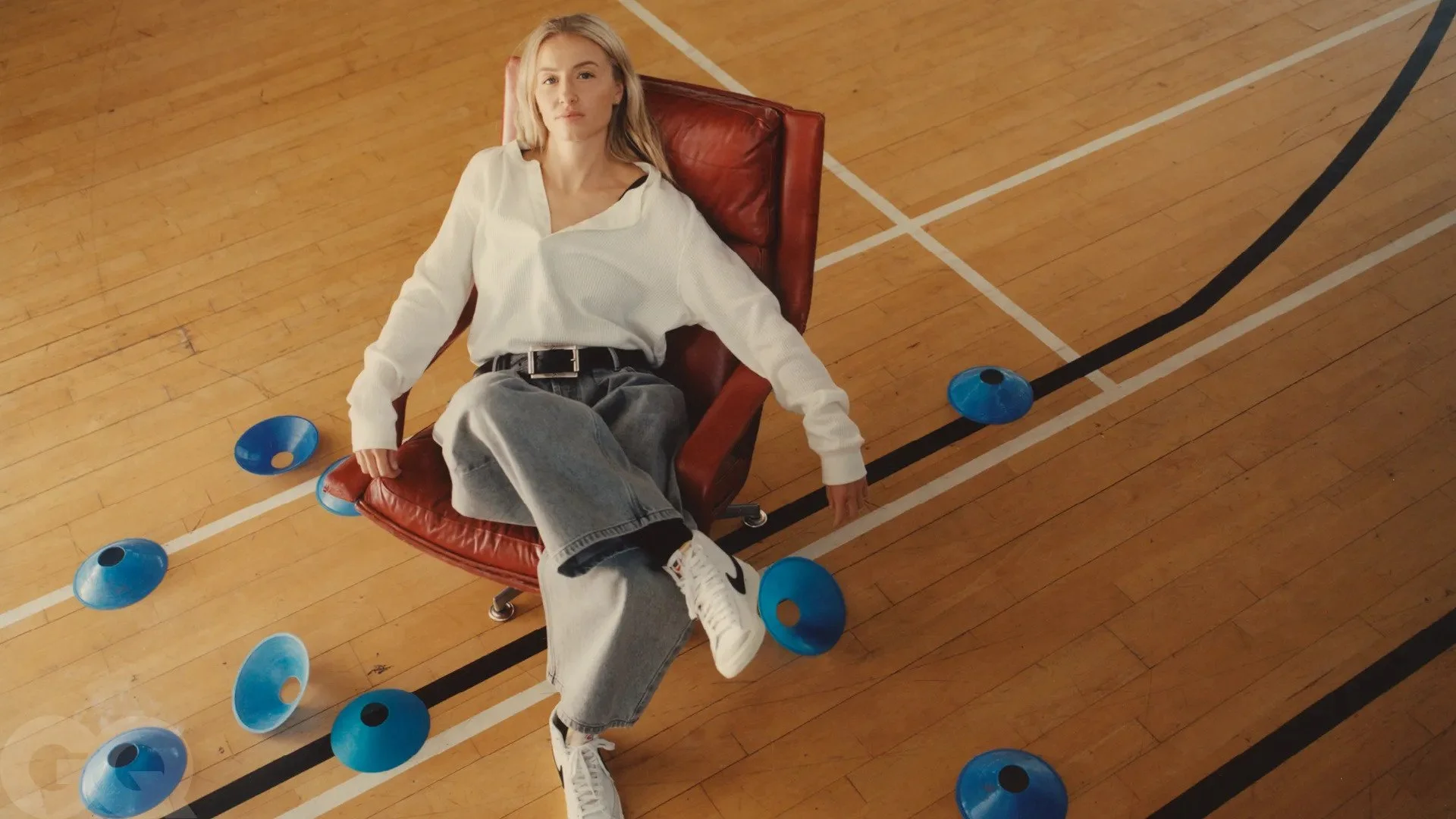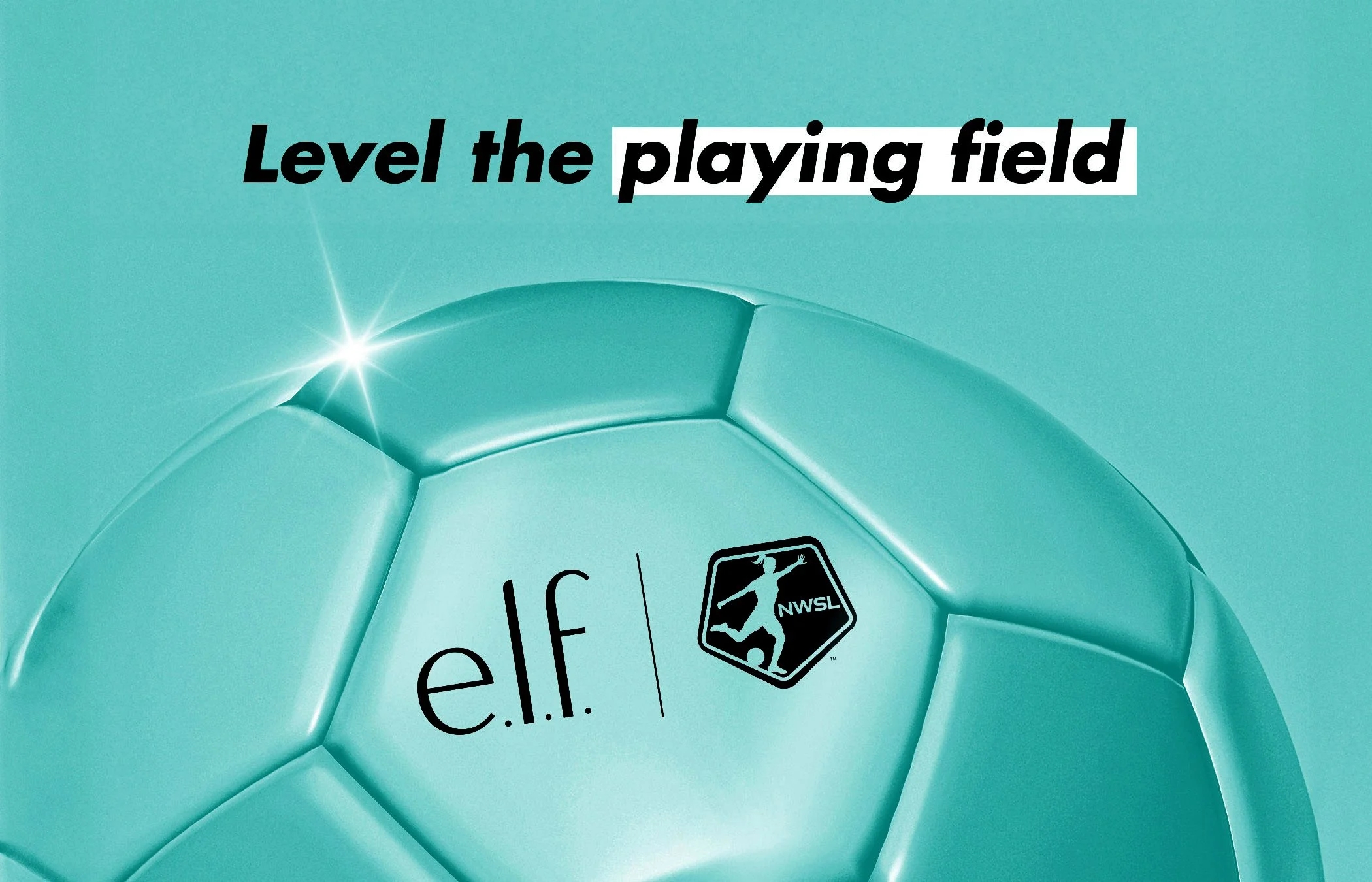THE RISE OF BEAUTY BRANDS IN SPONSORSHIP: U.S. TREND OR A GLOBAL SHIFT IN STRATEGY?
Image credit: Ilona Maher photographed in Sports Illustrated by Ben Watts.
By Lisa Parfitt
The Rise of Beauty Brands in Sponsorship: US trend or a global shift in strategy?
After decades of being notably absent from sports sponsorship, beauty brands are suddenly everywhere in women's sport Stateside. From Glossier's partnership with the WNBA to e.l.f. BEAUTY becoming official makeup partner of the NWSL the beauty industry has discovered what I’ve long believed, that women's sports and beauty are a marketing match made in heaven.
But why now? What's driving this sudden surge of interest, and why are we seeing brands that have traditionally focused on lifestyle and fashion investing millions in sports partnerships?
Image Credit: Glossier and the WNBA
Cultural shift meets market opportunity
The convergence of several cultural and economic factors has created an unprecedented opportunity for beauty brands to enter the sports space. Deloitte predicts that this year, for the first time, women's elite sports will generate revenue surpassing US$1 billion - a 300% increase from the evaluation in 2021. This explosive growth has caught the attention of beauty brands who recognise the untapped potential in reaching engaged female audiences through sport.
The cultural zeitgeist has shifted dramatically. Female athletes are no longer expected to downplay their femininity or apologise for caring about their appearance. Instead, we're seeing a generation of athletes like Illona Maher, Emily Campbell and Leah Williamson who embrace both their athletic prowess and their personal style, creating touchpoints for beauty brands that previously felt forced, inauthentic or not in tune with the body positive wave of feminism.
In 2024, the momentum grew significantly when four beauty brands - e.l.f. BEAUTY, Dove, NYX, and CeraVe - all advertised in the Super Bowl. Using such a mainstream sports platform signalled that beauty brands were no longer content to remain on the sidelines of sports marketing.
Image credit: Leah Williamson photographed in GQ by Elliot James Kennedy.
Where have you been?
The absence of beauty brands from sponsorship wasn't accidental - it reflected deeper cultural attitudes about femininity and sport. The well-established concept of the ‘Female Athlete Paradox’, primarily developed by scholars Vikki Krane, Kerrie Kauer, and others in the early 2000s, uncovered how sportswomen tread a fine line of acceptable femininity in sport which has traditionally accepted masculine ideals of strength and competition. This was reinforced by societal expectations and media representation. Strong, yes. Strong + sexy, no! This left little room for brands associated with beauty and self-expression.
Furthermore, women's sports lacked the media coverage and audience numbers that justified significant marketing investments. The beauty industry operated under the assumption that their customers weren't sports fans, ignoring the reality that women who care about their appearance are just as likely to be passionate sports enthusiasts.
This year, marketing efforts for everything from skincare to fragrance targeted new audiences and sub-communities - Gen Alpha, male athletes, pet owners, "MomTok" - and across more channels than ever. This diversification of target audiences reflects the industry's realisation that their traditional approach was too narrow.
Early Movers Setting the Standard
The early movers didn't simply pay for awareness, they created partnerships that felt authentic to both their brand values and the athletes they supported. Glossier's approach with the WNBA exemplifies this new model - rather than simply badging, Glossier has created content that celebrates the natural beauty - and its connection to the confidence - of female athletes.
Similarly, e.l.f. BEAUTY, the NWSL’s official makeup and skincare partner, has created bespoke products and content that speaks to the unique needs of female athletes.
In the UK, we're seeing similar moves. Clinique's partnership with Premiership Women's Rugby (PWR) demonstrates how established beauty brands are recognising the potential of supporting women's sport at grassroots and elite levels simultaneously. Clinique’s campaign, GameFace, looks to build female confidence through inner strength and skincare. Clinique's investment is also a validation of the commercial viability of women's sport partnerships.
Image Credit: Matta and Clinique - GameFace
UK and Europe untapped markets
Whilst North American partnerships dominate, the EMEA markets presents an equally great opportunities for beauty brands willing to invest early. Research by the Women's Sports Trust found that at least 80% of UK brands involved in sports sponsorship are likely to continue investing in the women's game over the next three years...because it works! In our own research we found that women’s sport fans (men & women) are far 25% more likely to purchase a sponsor brand than fans of men’s sport. The commitment from existing sponsors creates a rising tide that benefits the entire ecosystem.
The Women's Super League Football presents a particularly compelling example. Barclays became the title sponsor of the WSL in 2019, believing they were investing in potential. Four years later, they're reaping the rewards of sponsoring one of the fastest-growing sports properties in the world. Beauty brands looking to replicate this success have numerous entry points, from individual player partnerships to league and competition associations.
The demographic alignment is undeniable. Women's sports audiences skew younger, more diverse, and more engaged than traditional sports audiences. These are precisely the consumers beauty brands struggle to reach through traditional advertising channels. The authenticity factor is crucial - when a brand like Clinique partners with PWR, it feels genuine rather than forced, creating stronger emotional connections with consumers.
Image Credit: e.l.f BEAUTY and the NWSL - Level the playing field
A Permanent Shift
The current wave of beauty brand investments in women's sport isn't temporary, it represents a fundamental realignment of marketing priorities. Recent title sponsorship commitments signal long-term strategic thinking rather than experimental or tactical spending.
For UK and European brands, the timing couldn't be better, with American brands leading the charge there's a clear playbook for success, but plenty of white space remaining. The combination of growing audience engagement, proven partnership models, and relatively accessible entry costs creates a compelling investment thesis.
UK beauty brands are particularly well-positioned to capitalise on this trend. The success of partnerships like Clinique and PWR demonstrates that UK consumers respond positively to beauty brands supporting women's sport. With events like the Women's UEFA Women’s Euros showcasing the commercial potential of women's football, the WSLF's continued growth, and new BBC Broadcast deal for PWR, the opportunities for meaningful partnerships are expanding rapidly.
The rise of beauty brands in women's sport represents more than just a marketing trend, it's a cultural correction that recognises the full humanity of female athletes. These partnerships celebrate women who are both strong and beautiful, competitive and stylish, fierce and feminine.
The beauty industry's long absence from sports sponsorship is ending with a bang, and the brands that recognise this shift will find themselves at the centre of marketing's most exciting growth story.
In the words of Illona Maher and inspiration to any beauty brands looking at women’s sport as a marketing investment, ‘you don't have to sacrifice your femininity by playing any sport."





